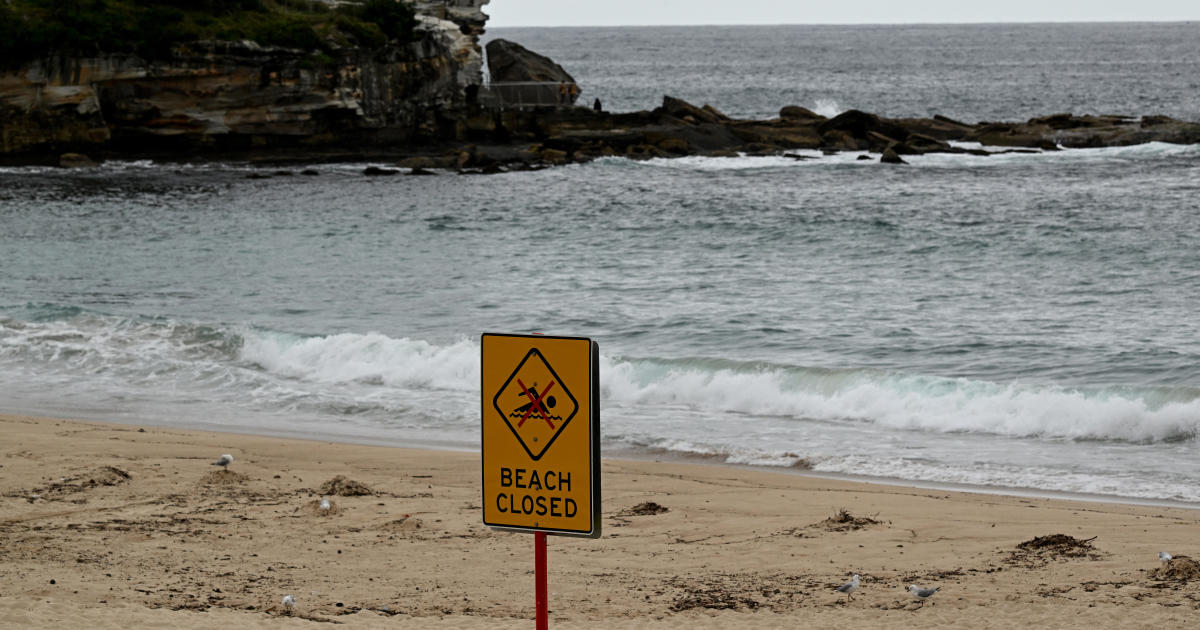The recent discovery of hundreds of mysterious black, tar-like balls on Sydney’s Coogee Beach and nearby Gordon’s Bay has sparked widespread curiosity and concern. These golf-ball to baseball-sized spheres, appearing unexpectedly along usually bustling stretches of coastline, have prompted immediate beach closures and a flurry of investigations by local authorities. The unusual nature of these objects, coupled with the concurrent reports of unidentified white blobs on Canadian beaches, highlights the enigmatic and sometimes alarming occurrences within our oceans and their impact on coastal environments. This unprecedented event demands a thorough investigation to determine the origin and composition of these materials, their potential environmental impact, and ultimately, prevent any further incidents. The scale of the occurrence is significant, as hundreds of the black spheres are visibly scattered along the sands, causing concern among residents and prompting questions regarding potential environmental and health hazards.
Identifying the Mysterious Black Spheres
The initial assessment suggests that the dark spheres might be “tar balls,” a common byproduct of oil spills or seepage. Tar balls form when crude oil interacts with seawater and debris, solidifying into the characteristic dark, sticky masses observed on Sydney’s beaches. The mayor of Randwick city, Dylan Parker, mentioned this possibility in his social media statement, highlighting the urgency for lab analysis to confirm the composition.
Compositional Analysis
Detailed laboratory analysis of samples is critical to conclusively identify the material’s components and origin. Spectroscopic techniques such as infrared (IR) and Raman spectroscopy can pinpoint the chemical makeup of the spheres, confirming the presence of hydrocarbons indicative of petroleum products. This would solidify the preliminary theory of tar balls stemming from oil contamination. Gas chromatography–mass spectrometry (GC-MS) could further identify the specific types of hydrocarbons and their ratios, potentially helping trace the origin of the spilled oil.
Tracing the Source of the Spillage
Once the spheres are identified as tar balls, pinpointing the source of the oil spill becomes paramount. Ocean currents and wind patterns must be analyzed to reconstruct the potential trajectory of the spilled oil. Satellite imagery and other remote sensing data could assist in locating possible sources, whether it be from a ship, offshore drilling platform, or a terrestrial source like pipeline leakage. Investigations into recent shipping activities, oil exploration and extraction in the vicinity of the beaches will be crucial in this investigation.
Environmental and Health Impacts
The appearance of a large quantity of tar balls raises significant environmental and potential health concerns. These spheres are not merely unsightly; they present a direct threat to marine life. Birds and other wildlife may ingest them, potentially leading to toxicity and even death. The sticky tar-like nature of the balls also entangles marine animals and coastal plant life, hindering their movement and harming their habitats.
Ecological Damage Assessment
Ecological assessments should be undertaken to evaluate the extent of the damage to coastal ecosystems. Marine scientists and ecologists will likely survey the intertidal zones, assessing populations of sensitive organisms. The study might encompass assessing changes in abundance and health indicators like reproduction rates and signs of physiological stress in organisms exposed to these spheres. This assessment would help estimate the scope of the environmental damage and potential long-term consequences.
Human Health Risks
Although direct contact with the spheres may not seem immediately hazardous, potential human health risks must be considered. The composition of tar balls varies, and certain components of crude oil can cause skin irritation, respiratory issues, and other health problems. Any individuals who come into contact with the tar balls must take precautions such as thorough washing to reduce potential health risks. Moreover, health authorities will be monitoring for any reported health incidents related to the event.
Comparison with Canadian Incident and Global Implications
The parallel incident of unidentified white blobs appearing on Canadian beaches highlights a wider, more pervasive challenge. Although distinct in appearance, both incidents highlight the mysteries and vulnerabilities associated with our oceans. This similarity of mysterious, unexplained material washing up on distant shorelines underlines the potential for larger, transoceanic environmental issues that demand collaboration between nations in detecting, addressing and investigating such unusual events.
International Collaboration
Given the potential for the origin of these spheres to be far removed from their discovery, international collaboration is needed to resolve the issue. Maritime agencies, environmental protection organizations and relevant scientific institutions should coordinate their efforts, pooling resources and expertise. Joint investigations to trace the origin of these materials and prevent future incidents are necessary. This collaboration not only applies to detecting sources of spills but also improving monitoring and reporting mechanisms across the globe to address such events more promptly and efficiently.
Ongoing Research and Monitoring
Continuous monitoring and research of ocean conditions and activities are required to anticipate and mitigate potential environmental crises like these. Further study of the composition and origin of these spheres could serve as an indicator of larger, unforeseen threats in our waters. Investing in improving pollution detection and mitigation techniques can reduce future incidents and protect vulnerable coastal ecosystems. A thorough investigation into this event can increase knowledge in several aspects like detecting and mitigating similar spills, as well as studying their effects on the marine ecosystem.
Takeaway Points:
- The discovery of mysterious black spheres on Sydney beaches necessitates thorough investigation into their origin and composition.
- Laboratory analysis is crucial to confirm the suspected nature of the material (tar balls) and trace its source.
- Significant environmental and potential health risks warrant careful assessment and monitoring.
- The concurrent incident in Canada emphasizes the need for international collaboration to address transoceanic environmental challenges.
- Ongoing research and robust monitoring of oceans are needed to predict and prevent similar incidents in the future.




